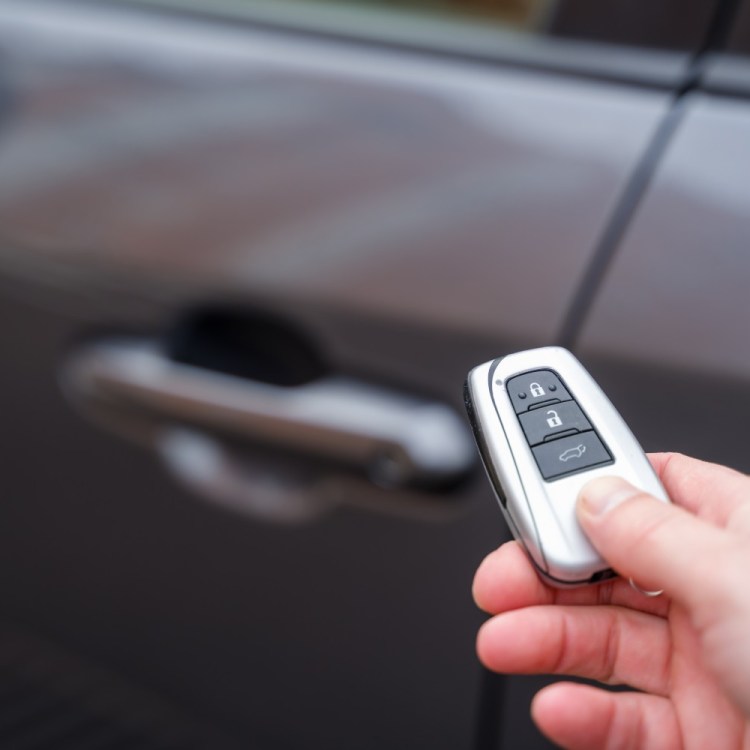Nota bene: All products in this article are independently selected and vetted by InsideHook editors. If you buy something, we may earn an affiliate commission.
If your neighborhood has seen an uptick in vehicle break-ins and theft in the last few months, you’re not alone. As the Associated Press, The New York Times and many other outlets have reported, while some crime rates have dropped off as a result of the COVID-19 pandemic and corresponding restrictions, automotive burglaries are most definitely up.
The worst story I’ve personally heard (from my neighborhood Facebook group, naturally) concerns a French family who moved to the U.S. about a year ago. At the beginning of lockdowns, someone broke into their car that was parked on the street, then a few days later the car itself was stolen.
No, I’m not going to blame them for the second robbery, even if they probably should have taken extra precautionary measures after the first break-in. I am, however, going to offer up a solution for them and a preventative measure for you: the dash camera.
We all know the dash camera, the devices that stick to your windshield or sit on your car’s dashboard and record your driving, but thanks to coronavirus, it’s time for these mini-surveillance systems to break out of the purview of Uber drivers and gearheads and go mainstream. (Ideally all cars would have something similar to Tesla’s Sentry Mode, but that’s a ways off.)
After some preliminary research, I decided to test both the Dash Cam Tandem and the Dash Cam Mini from Garmin. You may be most familiar with the brand’s navigation devices and James Bond watches, but the tech company’s dash cameras are praised for being both user-friendly and jam-packed with features. However, my number one criteria was having something discreet, because who wants to ruin their driving experience with some ungainly piece of tech? Alongside size, there are a few things to know before you buy one, whether you end up going with Garmin or a different brand.
Go small, but don’t sacrifice options
At the outset of the test, I favored the Dash Cam Mini simply because it’s so dang tiny, about the size of today’s standard car key. Even though the Dash Cam Tandem is only slightly larger, being a horizontal-profile box made it seem like too much of a commitment on my windshield. After testing, though, the latter won out because it provides both exterior footage (out the front of the car) and interior footage (looking back at me, and capturing all four windows of my car with 180-degree lenses). Both cameras provide clear footage even at night, and some may be inclined toward the smaller size to hide it from potential burglars in order to catch them in the act. On the other hand, you might want a larger, more prominent camera for the same reason people put signs in their yards announcing a home-security system: the mere presence of it may deter someone from even considering a smash-and-grab job.
These are not plug-and-play devices
Most dash cameras advertise themselves as plug-and-play — stick the camera on your windshield, run a cord from the camera to an included lighter port (or any USB outlet in your vehicle), and you’re all set! Well, not quite. While the popular conception of a dash cam may be to record what happens while you’re driving, the real benefit is being able to record what happens when you’re not driving, or not even near the car at all. To do that, you’ll need to hardwire the camera to a constant power source in your car that won’t zap your battery, and Garmin offers a solution in the form of the Parking Mode Cable. Unfortunately, Garmin isn’t kidding around when it recommends “having an experienced installer with the proper knowledge of electrical systems install the device.” After watching the many YouTube tutorial videos, I learned the hard way that if you want your dash camera to work, and to look natural in your car rather than like some DIY project gone haywire, you’ll want to have your local shop install it for you. Make sure you have them tuck the cords out of sight, too.
Make sure it has Parking Surveillance Mode
Whether or not you buy from Garmin, make sure the dash camera you buy has some version of their Parking Surveillance Mode. In Garmin’s models, it works like this: when your car is parked, the camera will immediately start saving video to the microSD memory card when motion is detected visually or physically, including retroactive video from 10 seconds before the motion. If you’re worried about someone breaking into your car, you’ll want to go with the larger Tandem model as it faces back into the car. If you’re only concerned with potential fender benders in front, the Mini model will work just fine.
There are plenty of other features to peruse, including Garmin’s excellent app where content can be reviewed and saved, or even viewed in real time. And a quick note on price, while the Dash Cam Tandem is currently $210 more than the Dash Cam Mini (which is $40 off), the larger model includes a 16GB microSD card while the Mini does not.
Whether or not you get a camera, from Garmin or elsewhere, is a decision drivers will have to make for themselves. But if you wake up one morning to a broken window and no leads to go on, I won’t be as sympathetic as I was with my French neighbors.
We've put in the work researching, reviewing and rounding up all the shirts, jackets, shoes and accessories you'll need this season, whether it's for yourself or for gifting purposes. Sign up here for weekly style inspo direct to your inbox.


















